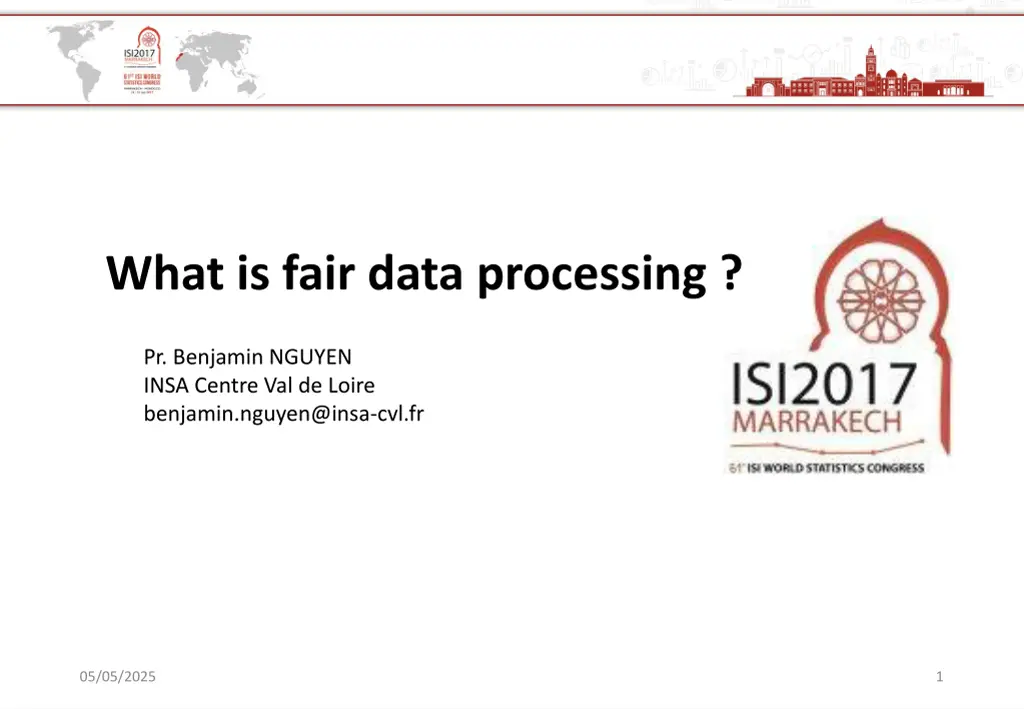
Understanding Fair Data Processing and Anonymous Data in Data Protection
Explore fair data processing practices and the concept of anonymous data in compliance with data protection regulations, including the processing of pseudonymous information and the challenges it presents. Learn about the principles and considerations for handling personal data in a lawful and ethical manner.
Download Presentation

Please find below an Image/Link to download the presentation.
The content on the website is provided AS IS for your information and personal use only. It may not be sold, licensed, or shared on other websites without obtaining consent from the author. If you encounter any issues during the download, it is possible that the publisher has removed the file from their server.
You are allowed to download the files provided on this website for personal or commercial use, subject to the condition that they are used lawfully. All files are the property of their respective owners.
The content on the website is provided AS IS for your information and personal use only. It may not be sold, licensed, or shared on other websites without obtaining consent from the author.
E N D
Presentation Transcript
What is fair data processing ? Pr. Benjamin NGUYEN INSA Centre Val de Loire benjamin.nguyen@insa-cvl.fr 05/05/2025 1
Two ways to process personal data in France (Europe) General Data Protection Regulation -- Regulation (EU) 2016/679 Get the approval of the CNIL (French National Data Protection Authority) Give all details of data processing : objective / intent, retention period, consent, data collected, right to explenation, right to be forgotten, etc. Get process approved Process anonymous data, because anonymous data is no longer personal data Pro : Do what you want with the data Con : How to anonymize ?
What is anonymous data ? The principles of data protection should apply to any information concerning an identified or identifiable natural person. Personal data which have undergone pseudonymisation, which could be attributed to a natural person by the use of additional information should be considered to be information on an identifiable natural person. To determine whether a natural person is identifiable, account should be taken of all the means reasonably likely to be used, such as singling out, either by the controller or by another person to identify the natural person directly or indirectly. To ascertain whether means are reasonably likely to be used to identify the natural person, account should be taken of all objective factors, such as the costs of and the amount of time required for identification, taking into consideration the available technology at the time of the processing and technological developments. The principles of data protection should therefore not apply to anonymous information, namely information which does not relate to an identified or identifiable natural person or to personal data rendered anonymous in such a manner that the data subject is not or no longer identifiable.
The problem with pseudonymous data [Swe02] Ethnicity Visit date Diagnosis Procedure Medication Total charge ZIP BDay Sex Medical DB 4
The problem with pseudonymous data [Swe02] Name Address Date Registered Party affiliation Date last voted ZIP BDay Sex Voter List 5
The problem with pseudonymous data [Swe02] Ethnicity Visit date Diagnosis Procedure Medication Total Charge Name Address Date Registered Party affiliation Date last voted ZIP BDay Sex Medical DB Voter List 6
Some proposals : K-anonymity [Swe02] and l- diversity [MKG+06] Name ZIP Age Sens. D. ZIP Age Sens. D. Sue Pat Bob Bill Dan Sam 18000 69000 18500 18510 69100 69300 22 27 21 20 26 28 50 70 90 60 70 70 Cher Rh ne Cher Cher Rh ne Rh ne [20-24] [25-29] [20-24] [20-24] [25-29] [25-29] 50 70 90 60 70 70 3-anonymous data Raw Data CP Age Sens. D. France France France France France France [20-29] [20-29] [20-29] [20-29] [20-29] [20-29] 50 70 90 60 70 70 6-anon and 4-diverse data
Some proposals : Differential Privacy [Dwo06] Differential privacy is a characteristic of an algorithm, which tries to assess its security. One says a (random) anonymization algorithm satisfies -differential privacy if - For all pairs of tables D1 et D2 which vary by only 1 tuple - For any result of this algorithm There exists such that : Pr[A(D1) = ] e Pr[A(D2)= ]
algorithm [Rastogi et al.] We can compute aggregate values such as COUNTs based on the estimator : QCold = (nsanitized .nDomain) / =0.5 =2 =200*0.005=1
Homomorphic Encryption Homomorphic Encryption is a characteristic of several crypto- systems such as RSA, Paillier, ElGamal, etc. Example : Consider RSA. Given the RSA public key (e, m), the encryption of a message x is given by : E(p)=p^e mod m The homomorphic property is : E(p1) x E(p2) = p1^e x p2^e mod m = (p1 xp2)^e mod m = E(p1 x p2) Fully Homomorphic Encrytion means that all ring operators are homomorphic (this means + and x). 10
Fully Homomorphic Encryption [Gen09] Any program with bounded input can be transformed into a Boolean circuit Any circuit can be transformed into a polynomial modulo 2 Secure computation of a polynomial equates to securely computing any program To securely compute a polynomial, it is necessary and sufficient to securely compute + and x operations. We say that E is a fully homomorphic encryption from ({0,1}, +, x) to (D, ) if for all c1, c2 in D, such that c1=E(p1) and c2=E(p2) E-1(c1) E-1(c2) = p1+p2 E-1(c1) E-1(c2) = p1 xp2 Or more generally E-1(fD(c1, ,cn))=f{0,1}(p1, ,pn) 11
Is anonymization enough ? Do these techniques work for Big Data ? Efficiency ? hard but research problem Specificity of human generated/related data ? see [dMon13] Unique in the crowd Other options to consider User control Usage control Auditability Limited collection Limited retention etc 12






















